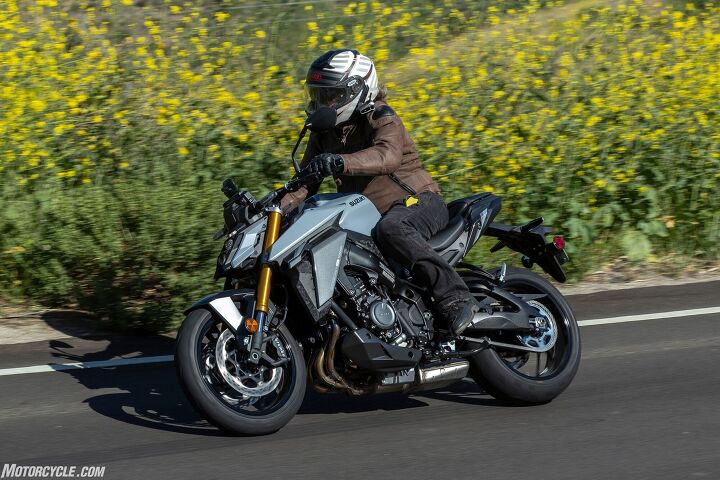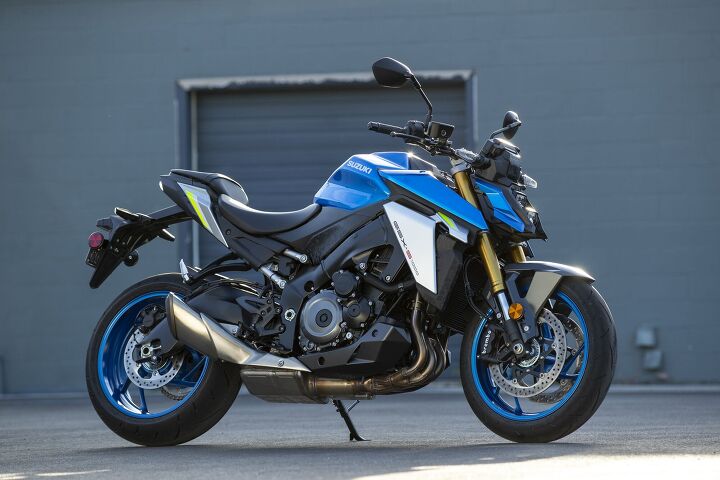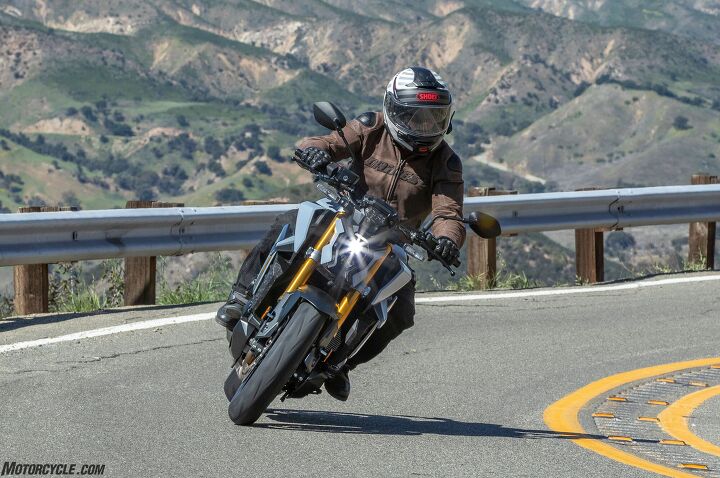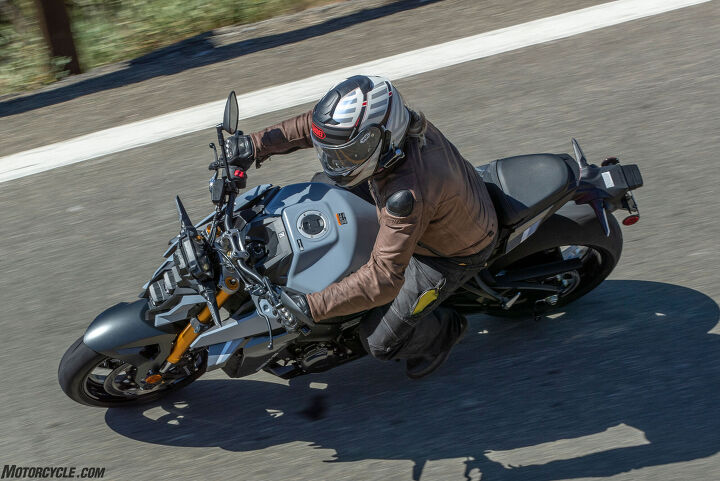Motorsports Racing News & Blog Articles
2022 Suzuki GSX-S1000 Review First Ride
It’s always fun to read the armchair quarterbackings of our beloved MOrons in the Comments whenever a new motorcycle springs into view, and the latest iteration of Suzuki’s naked GSX-S1000, harumph, was no exception. Some hate the angular new styling, some defend it. Some lament the demise of Suzuki in general, some admire the company’s resourcefulness in doing less with more. Repeatedly. And everybody knows how they could do it better.
2022 Suzuki GSX-S1000Editor Score: 87.25%
| Engine | 18.75/20 | Suspension | 12.5/15 | Transmission | 9.5/10 |
| Brakes | 8/10 | Instruments | 4/5 | Ergonomics | 8.5/10 |
| Appearance | 9/10 | Desirability | 8/10 | Value | 9/10 |
| + Highs Even more smooth midrange ooomph than before Standard new rotary-type auto-blip quickshifter is the berries The bottom line has held – $11,299 | – Sighs New big 5-gallon tank – but no cruise control Makes it hard to justify spending more on a big naked bike… Except maybe the green supercharged one |
At the same time, rumors of the death of the Hamamatsunian manufacturer are as usual, greatly exaggerated, and the new GSX-S1000 is what it’s always been – an approachable, muy powerful, not-frilly motorcycle for the masses – and a much-improved one compared to the slightly disappointing Katana we traveled to Kyoto to ride a few years ago. I mean, I wasn’t disappointed at all, thanks to the Wagyu beef and the Toto Washlets, but lots of other people were.
2022 Suzuki GSX-S1000 First Look
2020 Suzuki Katana Review – First Ride + Video
It is interesting how, after what, 50 or 60 years of selling motorcycles to the rest of the world, some things still fail to translate. In speaking with a Japanese product planner on hand for the new GSX-S launch about reasons for the Katana’s failure to gain traction in America, I pointed out that a lot of people thought the 3.2-gallon gas tank was just too small. I mean, a lot of people are saying it. He seemed a bit baffled still, but maybe just pretending, since the new GSX-S wears a 5-gallon tank that should give it close to 200-mile range. Way bigger than the Katana’s, and even half-a-gallon bigger than the current GSX-S.
Clean and Green
The GSX-S needed to be upgraded to Euro 5 emissions, so Suzuki went ahead and moved the whole bike into the 21st-century, replacing the throttle cables with a ride-by-wire system. That gave them the chance to program in three new ride modes, five-level traction control, and an upgraded ABS system – all of it working without benefit of an IMU (inertial measurement unit), which will be fine with most buyers and which keeps the price down to $2200 less than the Katana and the same price as the outgoing GSX-1000S. The new bike even gets a standard up/down quickshifter, a rotary style one that fits onto the shift shaft and works marvelously.
But it’s the new “Razor Sharp and Ready to Strike” design concept that really brings the peanut gallery to its feet, all sharp angles mimicking the MotoGP Suzuki’s aero devices, and sporting three stacked rectangular LED lights. The prow seems a bit smaller overall than the previous more bulbous roundish headlight, the tail has been bobbed a couple inches, and the overall look is of a more compact, thick-in-the-shoulders powerful naked bike. The MotoGP blue is to die for, but the gray that looks flat in the shade also has tiny metal flecks deep in its paint in the sun. Nice.
Not quite the full monte
Conspicuously absent in the new switchgear is the cruise control button that will be found on the new GSX-S1000GT sport tourer that’s scheduled to arrive later this summer. Suzuki left it off the GSX-S for the same reason the Katana got a 3.2-gallon tank: Some will use the bike as a commuter (it’d be a great one), but Suzuki doesn’t think they’ll be commuting far enough to need cruise.
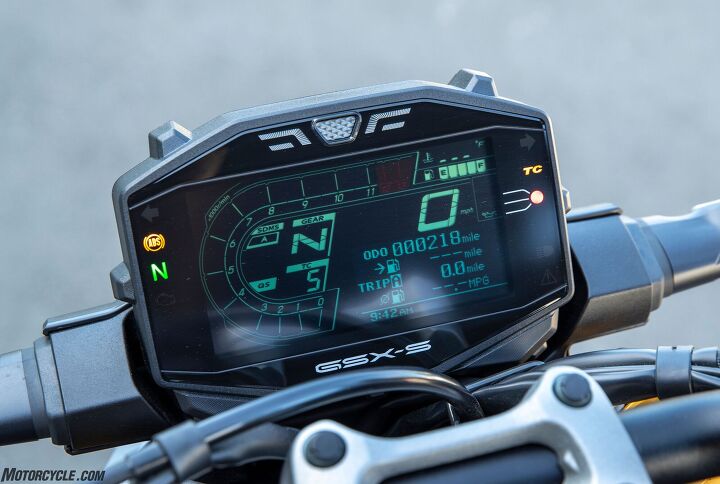
Later, parked in the shade, I saw we averaged 39 mpg in about 90 miles flogging the thing within an inch of its life through some of Malibu’s gnarliest canyons. Not bad. The brightness is adjustable, and the shift light at top center is programmable.
The new GT will also have a new TFT display, but for the S, Suzuki stuck with the kind of cool LCD panel it used on the Katana, with a wrap-around digital tachometer reminiscent of the one on the original Kat. It’s perfectly okay and gets the job done, but it can be hard to read in direct sunlight. What do you need to know that’s so important? This engine’s so muscular all over, you barely need a tachometer anyway.
The Suzuki’s Computer Area Network (CAN) wiring harness “enables the motorcycle’s various sensors and microcontrollers to communicate instantaneously with each other… With fewer wires, CAN-wiring lets the GSX-S1000 be lighter and simpler and provides a way for the advanced components – like the electronic throttle bodies and bi-directional quick shifter – to communicate faster with the ECM.” For the 2022 bike, that ECM is now an even quicker-thinking 32-bit unit.
K5
The basic 999 cc 180-degree crankshaft inline Four with 12.2:1 compression remains the same, but Suzuki says it contains new intake and exhaust camshafts with reduced lift and overlap, the better to completely combust you with. The revised airbox is said to offer less resistance now, and it feeds four 40mm electronically actuated throttle bodies instead of the previous 44mm ones – also a good thing for midrange power.
We’ve also got new valve springs, and all of it feeds into a new exhaust system with two catalytic converters upstream from the SET valve – which means you can still slip on a slip-on without running afoul of the law.
There’s also a new slip/assist clutch that’s even slipperier, and makes the cable-actuated clutch lever even a bit lighter. It’s all a pretty well-oiled machine at this point.
Cyn Carving 101
I wondered for an embarrassingly long time after I moved to California, why so many roads ended in “Cyn,” and how to pronounce it? Latigo Sin? Santiago Kine? Oh, canyon. These would be the squirrely little two-lanes that cling randomly along the sides of mountains to connect what are now, in Malibu anyway, the mansions of the rich and famous. On the tightest ones, lots of horsepower is more hindrance than help: What really rules is light weight, quick steering, and good bump absorption.
Then again, now that there’s traction control, big horsepower can’t hurt as much as it once could. Now we’ve got easily adjustable five-level TC which you can also turn OFF if it’s wheelies you need. I left mine in level 1 all day, and felt free to whack the gas on leaned over with nary a scare. With no IMU, it’s not the latest race-track TC system, but still a great safety feature for us squids.
A,B,C…
What slight dip in the midrange of the powerband we might have once mentioned is now a thing of the past: Thanks to the new tuning, shorter cam timing, and smaller throttle bodies, that dip’s been backfilled with a flatter torque curve, which Suzuki claims even results in a couple more horsepower on top.
Toggling into ride mode A shows off the new midrange to greatest effect, with a massive burst of torque that seems like it’s already zotting you into the future from as little as 4000 rpm, and feels like it should activate level 1 TC when you gas it hard leaned over in the first few gears. Plugging in the more reserved B mode feels safer and less exciting, so I wound up going back to A for most of the day because any stimulation at my age is good. C is probably good in the wet.
For most of the GSX-S’s life, moreso the earlier bikes, we also complained about jerky response when first cracking the throttle. That’s about 83% gone on this latest version, and replaced not by a jerk but by an actual lunge of juice, especially in A mode. What minuscule abruptness that’s left really isn’t a problem since the TC’s there to keep the tire from stepping out anyway, right? And once past second gear, the opening-throttle jolt isn’t felt at all – just creamy smooth power and plenty of it. For making time on the street, it’s hard to argue with a 999cc GSX-R four-cylinder that’s been tuned for torque. You still know you’re riding a gnarly 2005 GSX-R1000 motor, but the new electronic controls make it an eminently civilized one.
Quickshifter
I also remember reading about “first-gear corners” in magazines when I lived in the flat midwest, and wondered what that could possibly be? Like, a right turn at an intersection? No. These Malibu Cyns have plenty of tight, 25-mph first-gear corners built right into the road, but you never much liked to drop down to first for them on most motorcycles, just because gearboxes were too clunky, most big engines too abrupt when taking the throttle up again, and it just usually seemed more efficient to slip the clutch a tad in second gear at the exit.
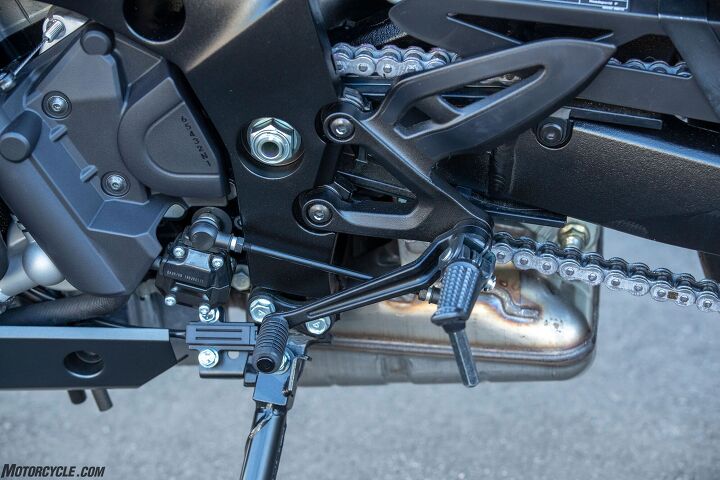
“To ensure smooth upshifts QS automatically interrupts power delivery just long enough to produce smoother, almost uninterrupted acceleration. When decelerating, the system automatically opens the throttle valves just enough to increase rpm and match engine speed to the next-lower gear. The result of this hands-free, automatic blipping function combines seamlessly with engine braking to create a highly satisfying experience when downshifting.”
Not any more, thanks to the Suzuki’s swell new rotary quickshifter. Now you roll up to mister tight corner and drop it clutchlessly into first at the last second (or sooner, thanks to the slipper clutch), arc smoothly through, and deploy massive first-gear thrust at the exit. Some quickshifters we’ve used aren’t real happy with 1-2 and 2-1 shifts; this one has no problem whatsoever snapping off perfect shifts up or down as requested.
Not only is the quickshifter great for sporting use, it’s also another of those everyday riding-around-town things that’s hard to do without once you’ve done with. Like cruise control. It’s an excellent upgrade to the GSX-S.
The whole enchilada…
 The rest of the bike’s fine. Along with the extra half-gallon of fuel capacity, we’ve gained about 10 pounds to 472, says Suzuki. Substantial enough to carry two in comfort but not too fat to turn and burn in sport mode. That weight is right in there with the bikes in last year’s Heavyweight Nakeds Shootout, where the contestants ranged from the 450-lb BMW S1000R to the 531-lb Kawi Z H2 SE. Light weight is expensive; the Suzuki’s claimed weight is one pound heavier than our measured curb weights for the $19.5k Aprilia Tuono V4 Factory and the $34k MV Agusta Brutale 1000RR. No, it doesn’t make quite as much power as those bikes, but I for one doubt you’d often notice the difference unless drag racing is your thing.
The rest of the bike’s fine. Along with the extra half-gallon of fuel capacity, we’ve gained about 10 pounds to 472, says Suzuki. Substantial enough to carry two in comfort but not too fat to turn and burn in sport mode. That weight is right in there with the bikes in last year’s Heavyweight Nakeds Shootout, where the contestants ranged from the 450-lb BMW S1000R to the 531-lb Kawi Z H2 SE. Light weight is expensive; the Suzuki’s claimed weight is one pound heavier than our measured curb weights for the $19.5k Aprilia Tuono V4 Factory and the $34k MV Agusta Brutale 1000RR. No, it doesn’t make quite as much power as those bikes, but I for one doubt you’d often notice the difference unless drag racing is your thing.
A big attraction of the naked class is its natural ergonomics, and the Suzuki’s as nice as it ever was, maybe even a bit better – I only rode it a few hours in canyon mode. A new aluminum handlebar about an inch wider gives even more control, but the fact that it’s now a bit higher and rotated rearward means you’re a bit more upright, leaning just far enough forward to offset windblast at 80-ish mph. The engine’s still bolted solidly into that classic GSX-R aluminum frame, and there’s still just a hint of tingle through the grips and aluminum footpegs – not enough for most people to complain about.
Suspension
No semi-active nor electronic anything here; we’re still using the same inverted 43mm KYB fork and linkage-mounted single shock at the rear – fully adjustable in front and rebound-adjustable in back – as God intended. Both feel a tad harsh on bumpy canyons, which you could probably dial out with a few clicks of damping adjustment, but who wants to stop? On smooth roads, they provide a nicely controlled ride, firm enough to allow complete exploitation of the GSX-S’s high-power capabilities in both accel and decel modes.
Your 310mm discs and four-piston calipers in front are now equipped with a more advanced ABS control unit, says Suzuki, which allows even harder braking than before. In street use, in the dry, we had zero complaints with the previous system, which could get the tire howling with two fingers on the lever. On the new bike, dragging the rear brake around those tight canyon roads is a great and safe strategy, thanks to the rear ABS, to fine-tune speed and course-correct mid-corner while the new custom Dunlop Roadsport 2 tires do their sticky thing.
Small things
Another piece of the new SIRS system (Suzuki Intelligent Ride) is the Low RPM Assist function, which prevents stalling and helps smooth power delivery from a stop. I guess that’s a good thing for beginners, but not sure if this is a great beginner’s bike? I guess there’s no reason it couldn’t be for beginners who have some self-restraint. Single-push starting is a thing Suzukis have had for a while, and on the GSX-S you don’t have to pull in the clutch when the bike is in neutral.

“Supplied by Koito, the independent, polygon-shaped, high- and low-beam headlights feature a new Mono-focus LED technology that shines light directly through a convex lens to brightly illuminate the road. The dual hexagonal shaped LED headlights are topped by a single LED position light that creates a clean new face that’s unlike any other motorcycle.”
There are already of course, cool accessories standing by, including things like really nice levers by Gilles Tooling, who make parts for Suzuki’s MotoGP machine, and a couple of tank bags that clip onto the fuel filler ring. However Suzuki is doing as a corporate entity, it did manage to win the 2020 MotoGP championship, you’ll recall, and I have a swell new coffee mug to remember it by.
There it is: The new GSX-S1000 is the same as it ever was but now a smoother, more civilized, and sophisticated citizen than ever. Kawasaki’s Z900 is a bit less expensive but not quite so powerful and feature-rich. The new Yamaha MT-10 will be even more techno and a bit faster, but also more expensive – and now that gas is $6, 35-mpg motorcycles are even more ridiculous. In the GSX-S price range, an MT-09 might be a more shoppable candidate, especially the SP. Honda CB1000? Underwhelming last we checked.
For now, the new GSX-S1000 remains a party of one, a great naked literbike that can run with the best of them, for a very reasonable amount of money. It feels like a good niche to be in.
|
In Gear
|
| 2022 Suzuki GSX-S1000 Specifications | |
|---|---|
| MSRP | $11,299 |
| Engine Type | 999cc liquid-cooled inline-Four cylinder, DOHC, four valves per cylinder |
| Bore and Stroke | 73.4 mm x 59.0 |
| Compression Ratio | 12.2:1 |
| Horsepower | 150 hp @ 11,000 rpm (claimed, crankshaft) |
| Torque | 78 lb-ft @ 9,200 rpm (claimed, crankshaft) |
| lb/hp | 3.1 |
| lb/torque | 6.1 |
| Transmission | Close ratio 6-speed, slip/assist clutch, up/down quickshifter |
| Final Drive | #525 chain |
| Front Suspension | 43mm inverted KYB fork with spring preload, rebound, and compression damping adjustability |
| Rear Suspension | KYB single shock, link type, with spring preload and rebound damping adjustability |
| Front Brake | Two 310mm discs with radial-mount four-piston calipers, ABS |
| Rear Brake | 240mm disc with single-piston caliper, ABS |
| Front Tire | 120/70-ZR17 |
| Rear Tire | 190/50-ZR17 |
| Rake/Trail | 25.0 deg/3.9 in |
| Wheelbase | 57.5 in. (1460mm) |
| Seat Height | 31.9 in. (810mm) |
| Curb Weight (Claimed) | 472 lbs. (214 kg) |
| Fuel Capacity | 5.0 gal. |
| Colors | Metallic Triton Blue, Metallic Matte Mechanical Gray, and Glass Sparkle Black |
| Warranty | 12 months, transferable, unlimited-mileage limited warranty |
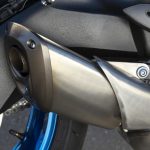
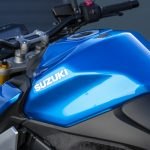


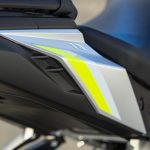



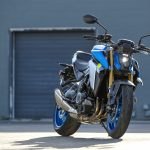
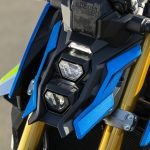



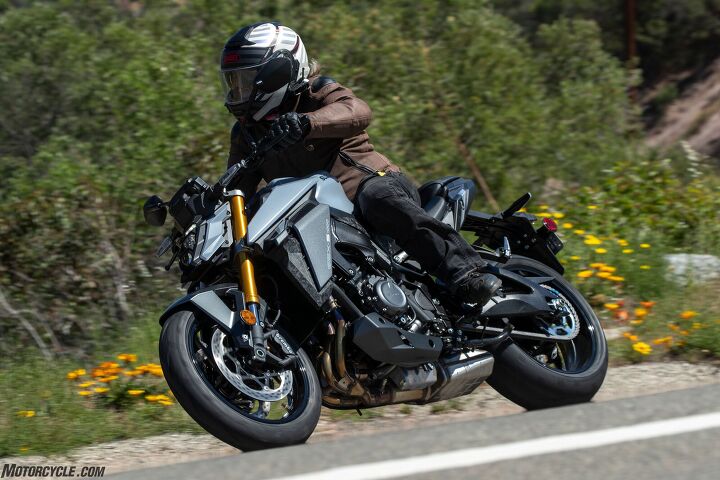

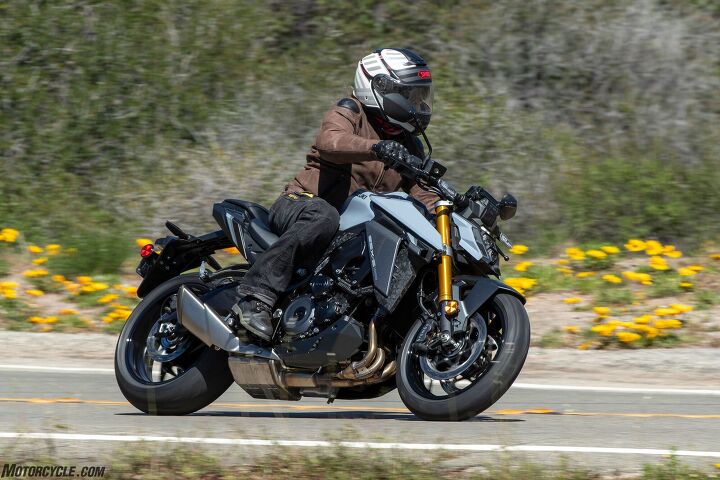
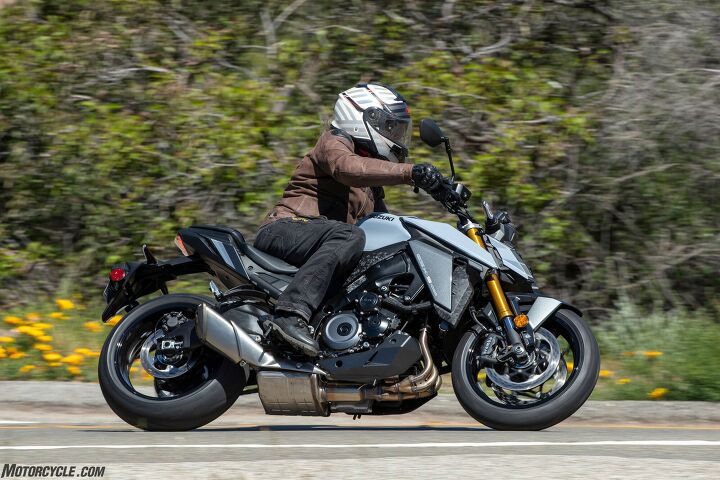








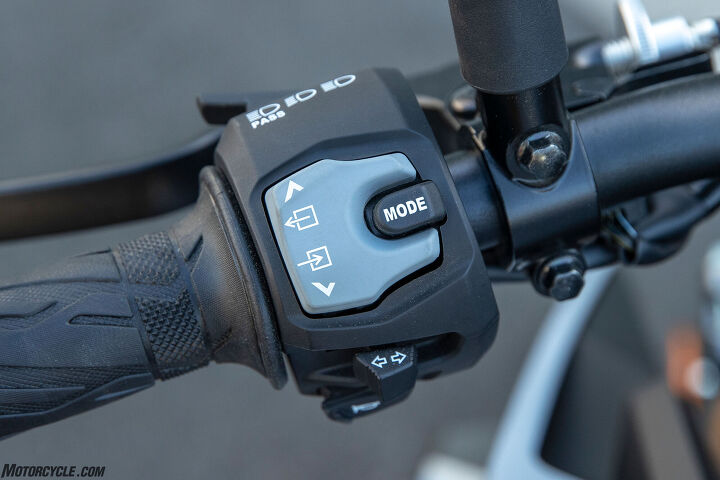

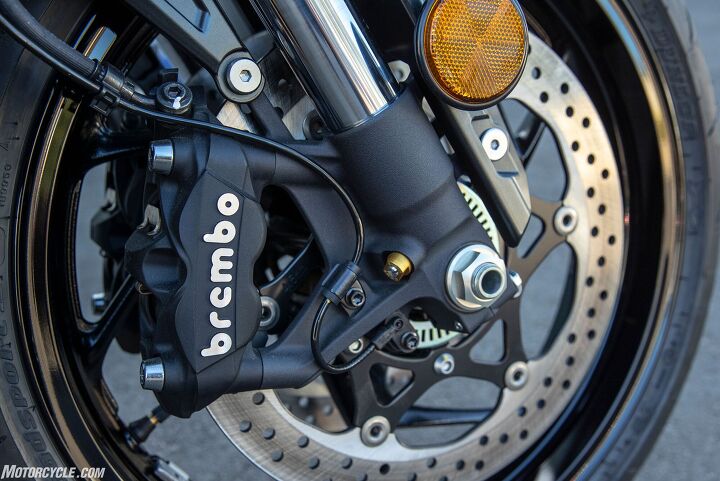
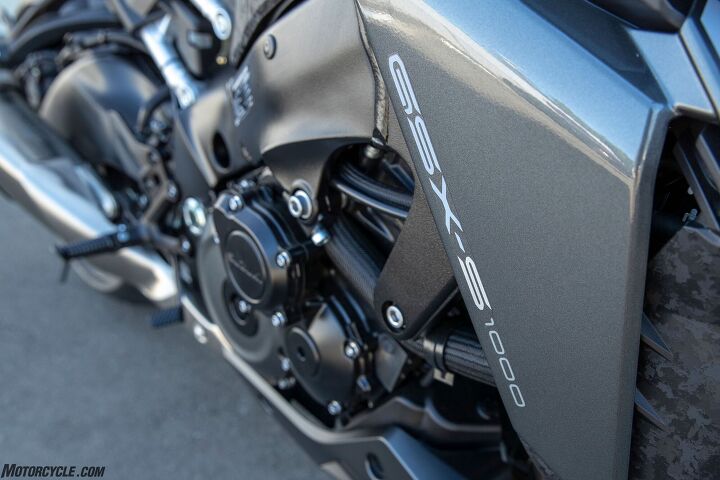


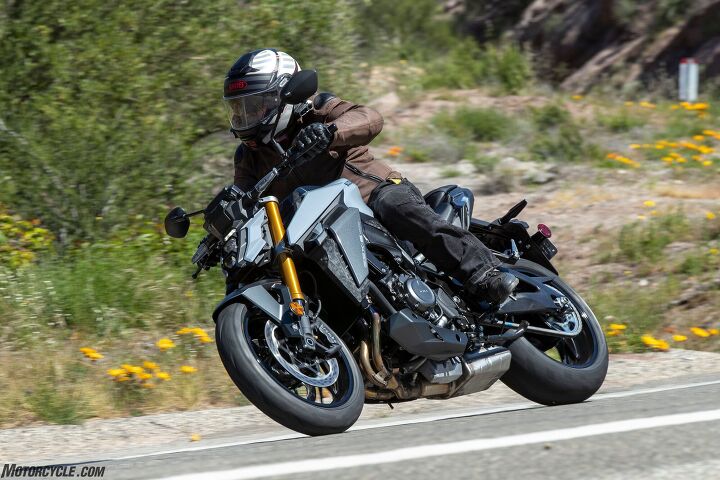



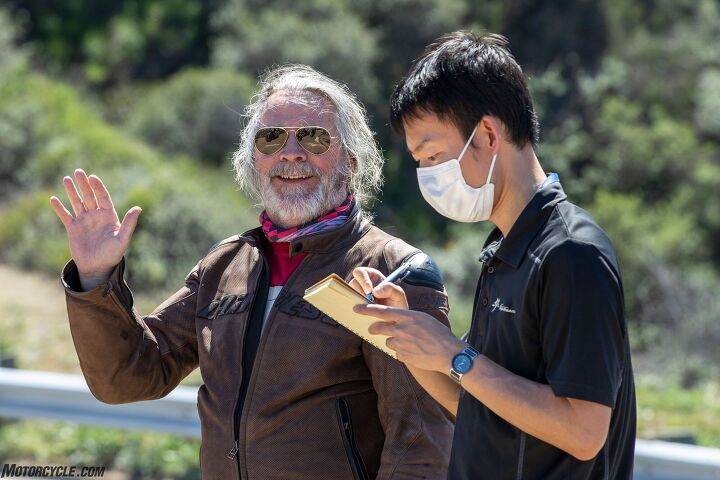
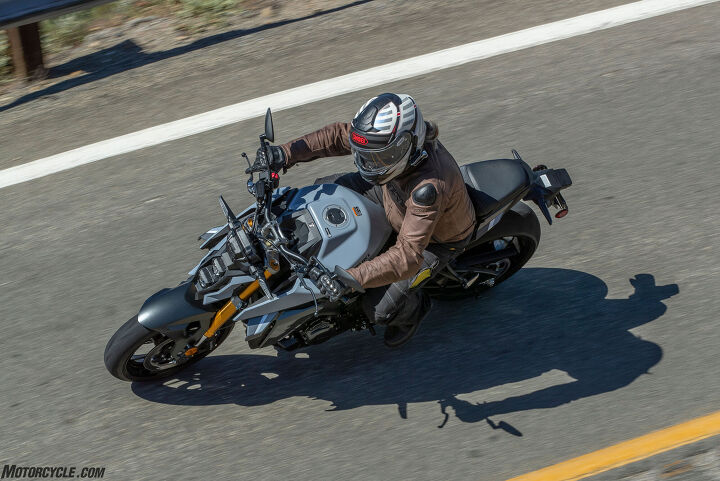



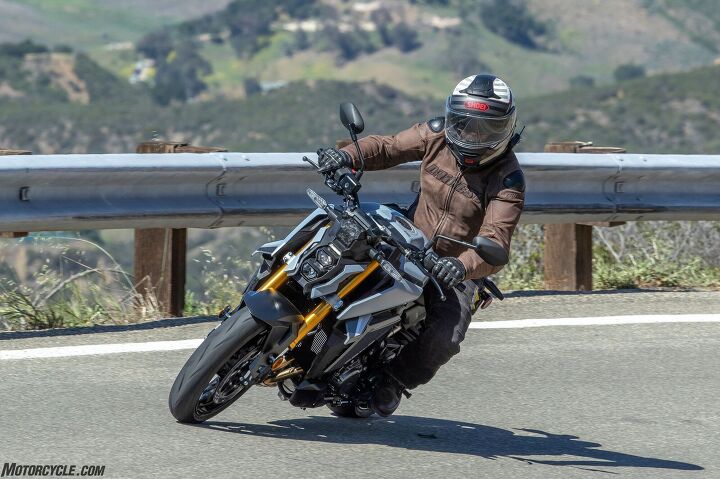



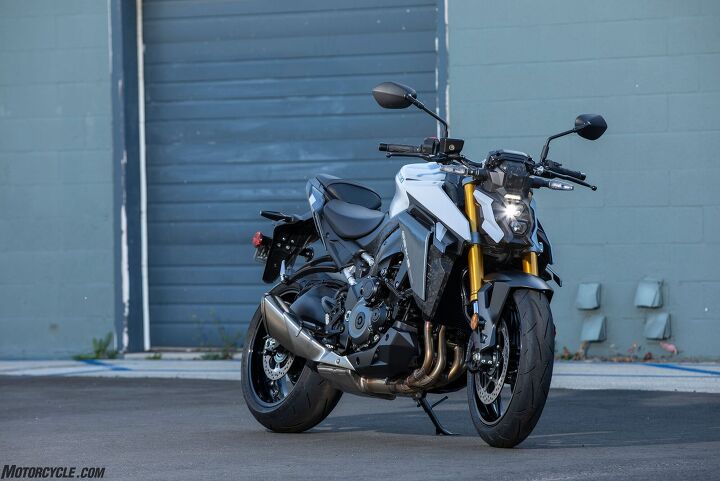









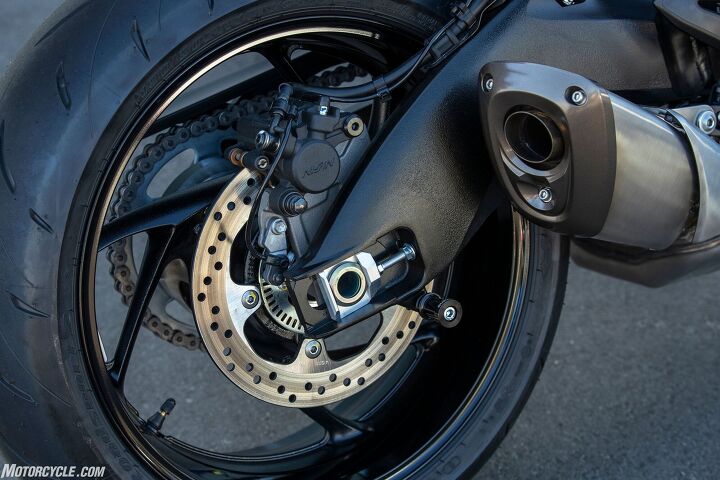

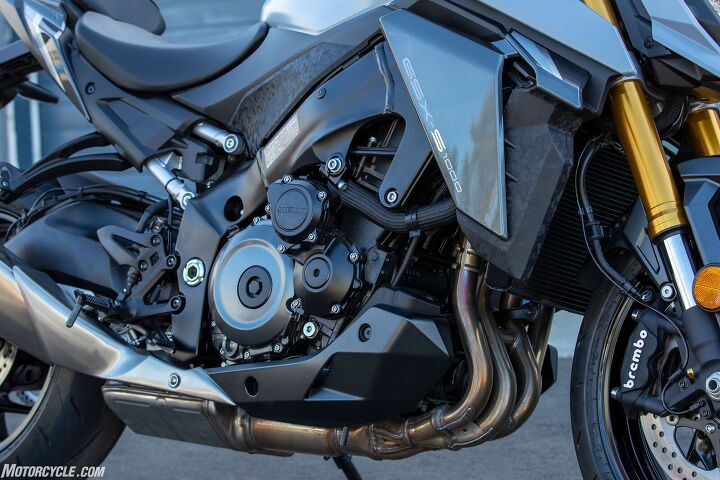

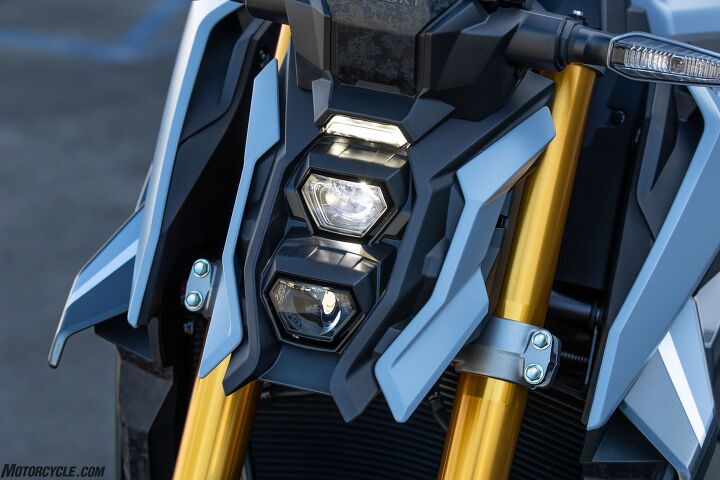


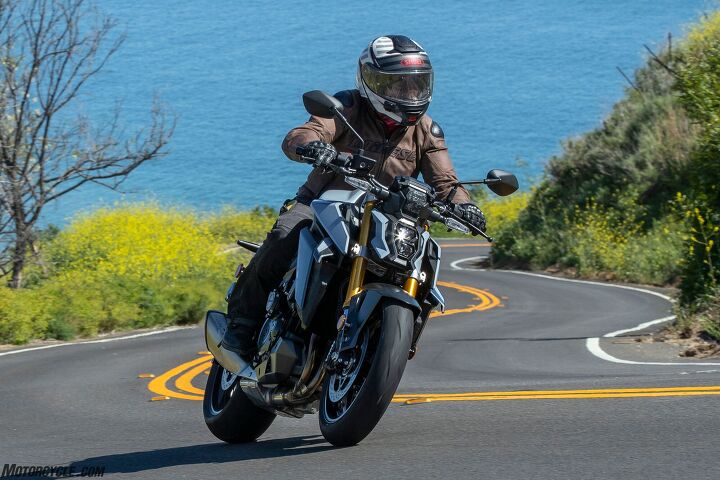

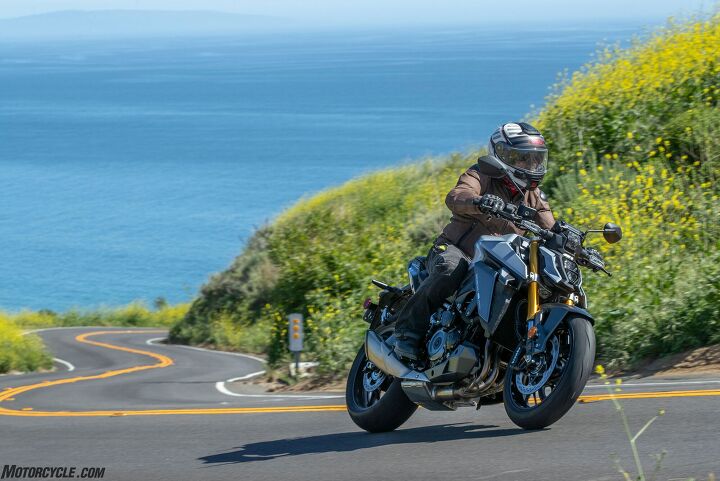




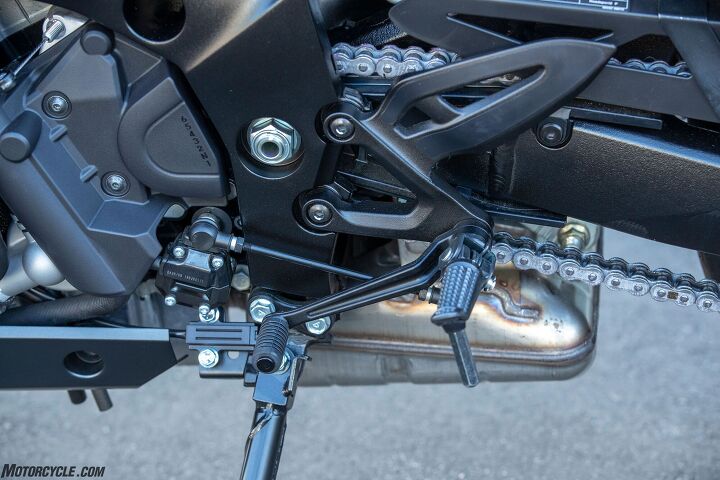



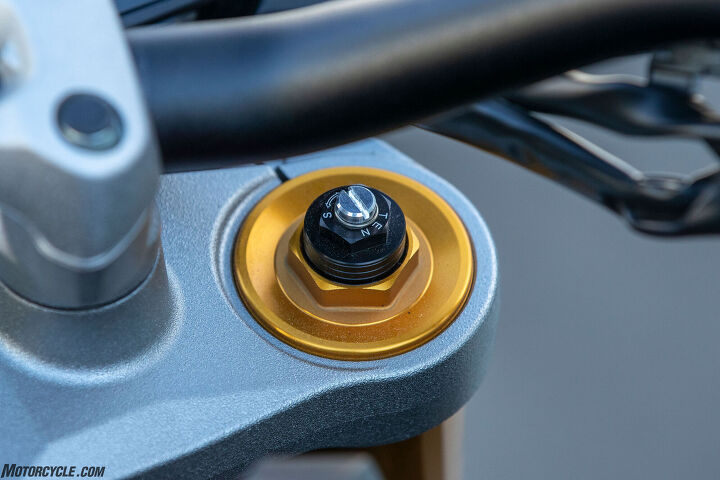










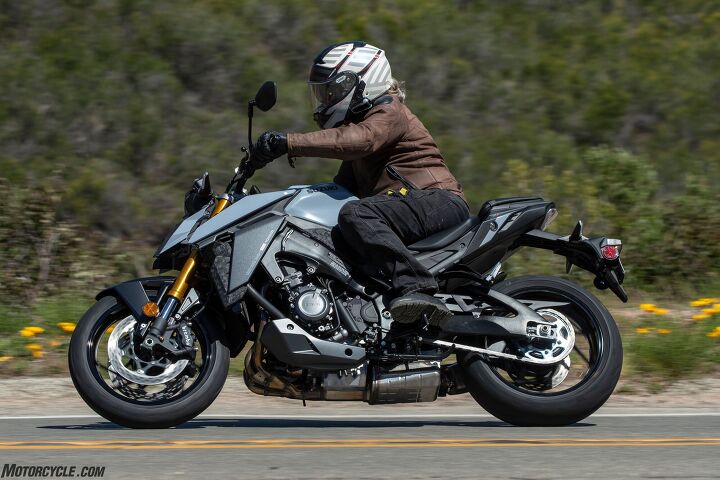














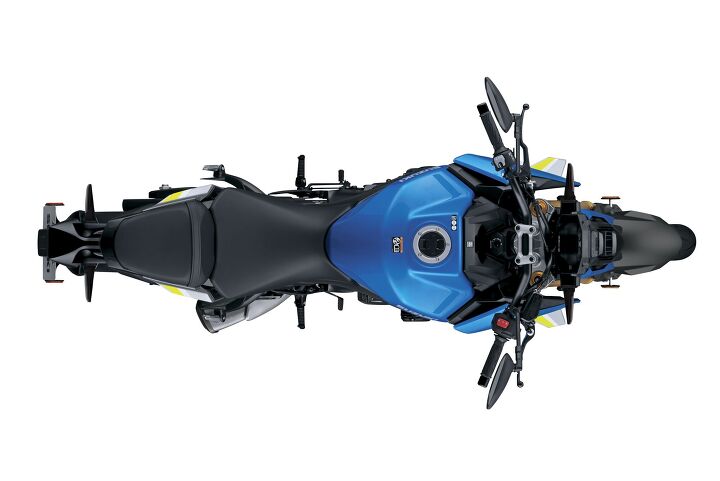


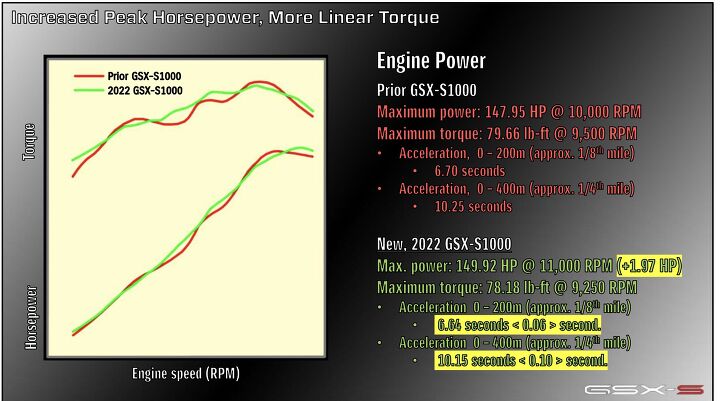

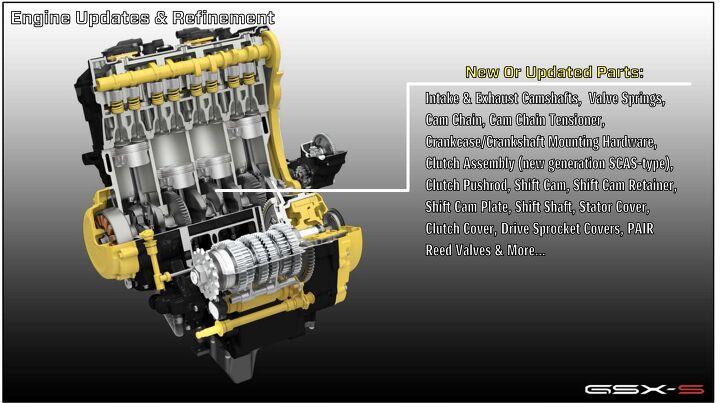
We are committed to finding, researching, and recommending the best products. We earn commissions from purchases you make using the retail links in our product reviews. Learn more about how this works.
Become a Motorcycle.com insider. Get the latest motorcycle news first by subscribing to our newsletter here.
The post 2022 Suzuki GSX-S1000 Review – First Ride appeared first on Motorcycle.com.
Copyright
© Motorcycle.com


